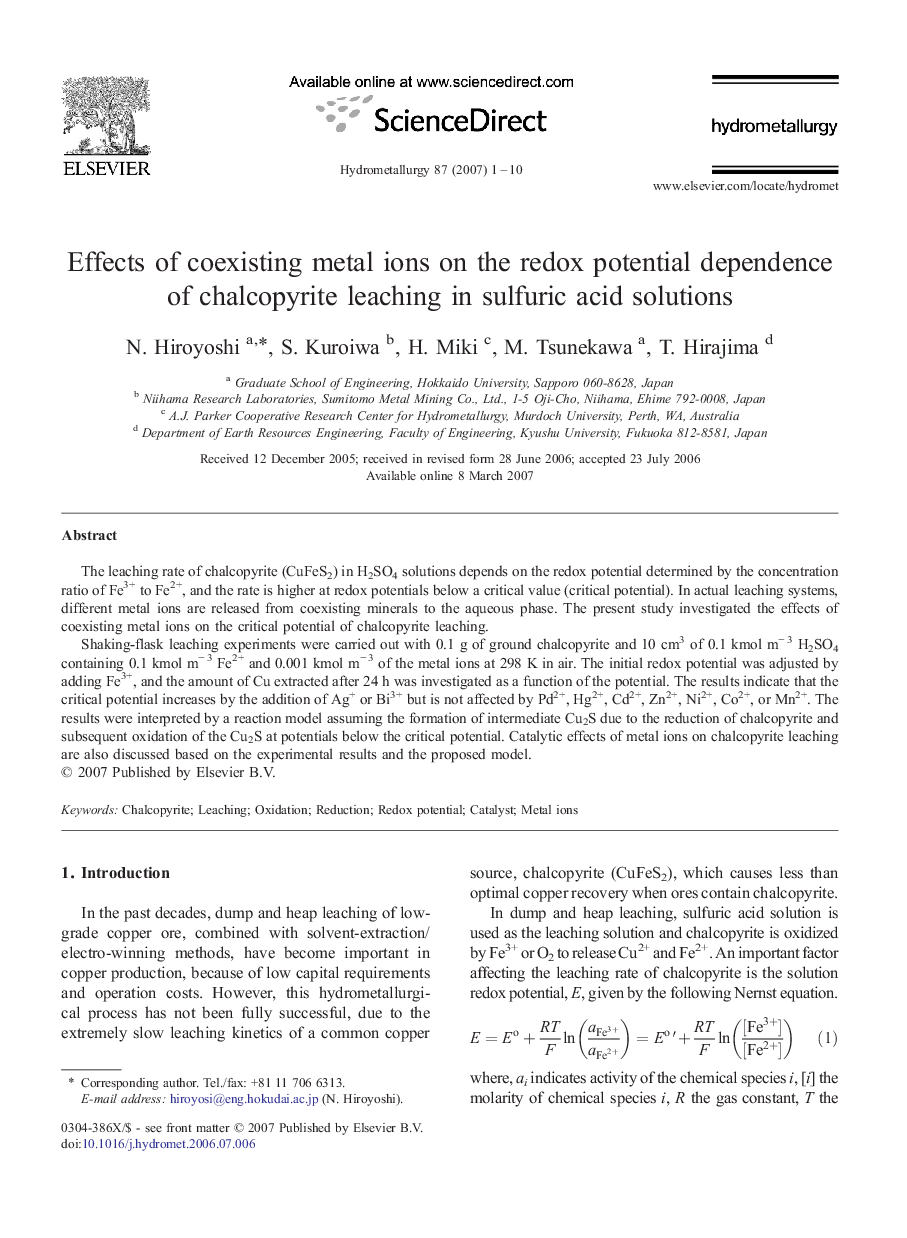| Article ID | Journal | Published Year | Pages | File Type |
|---|---|---|---|---|
| 213549 | Hydrometallurgy | 2007 | 10 Pages |
The leaching rate of chalcopyrite (CuFeS2) in H2SO4 solutions depends on the redox potential determined by the concentration ratio of Fe3+ to Fe2+, and the rate is higher at redox potentials below a critical value (critical potential). In actual leaching systems, different metal ions are released from coexisting minerals to the aqueous phase. The present study investigated the effects of coexisting metal ions on the critical potential of chalcopyrite leaching.Shaking-flask leaching experiments were carried out with 0.1 g of ground chalcopyrite and 10 cm3 of 0.1 kmol m− 3 H2SO4 containing 0.1 kmol m− 3 Fe2+ and 0.001 kmol m− 3 of the metal ions at 298 K in air. The initial redox potential was adjusted by adding Fe3+, and the amount of Cu extracted after 24 h was investigated as a function of the potential. The results indicate that the critical potential increases by the addition of Ag+ or Bi3+ but is not affected by Pd2+, Hg2+, Cd2+, Zn2+, Ni2+, Co2+, or Mn2+. The results were interpreted by a reaction model assuming the formation of intermediate Cu2S due to the reduction of chalcopyrite and subsequent oxidation of the Cu2S at potentials below the critical potential. Catalytic effects of metal ions on chalcopyrite leaching are also discussed based on the experimental results and the proposed model.
